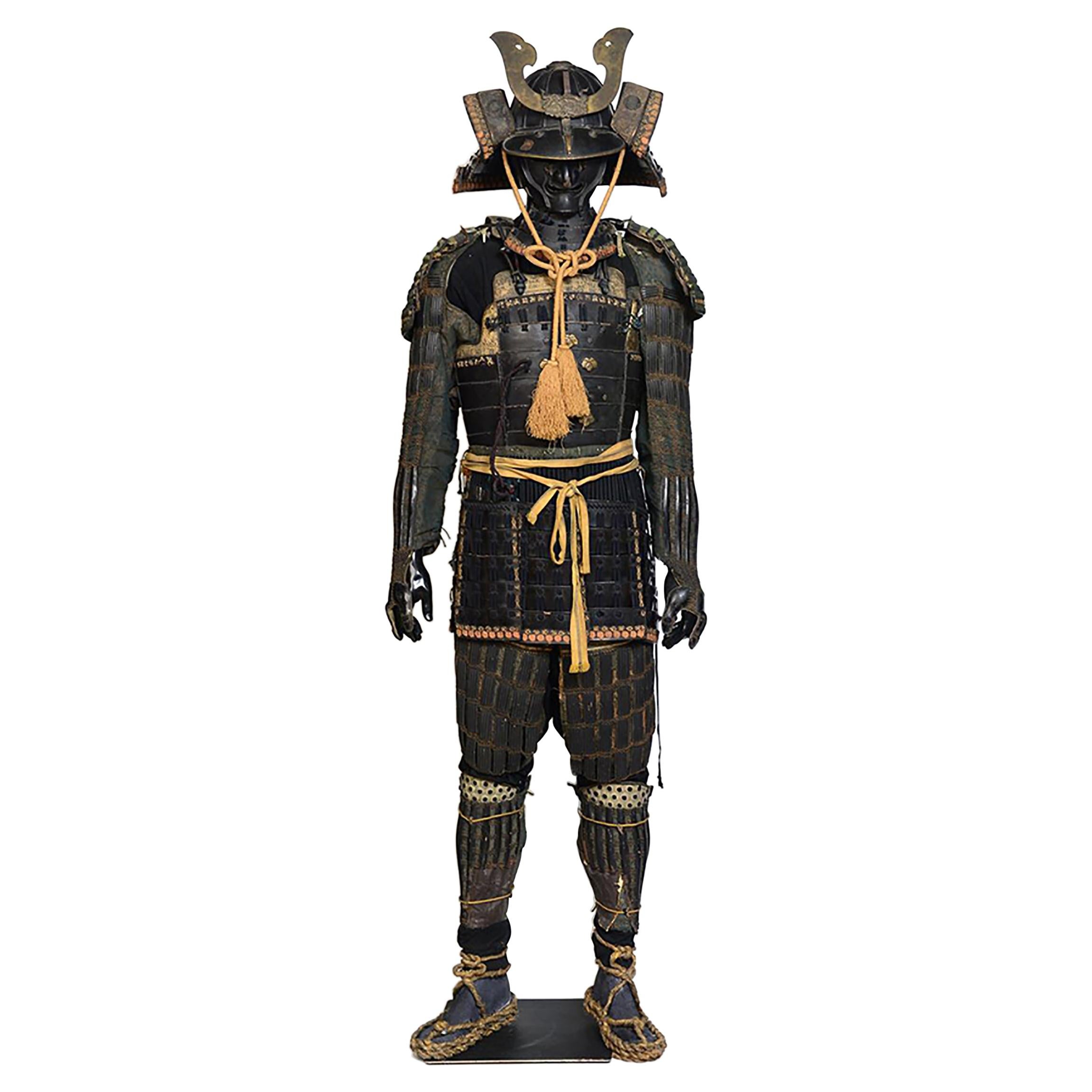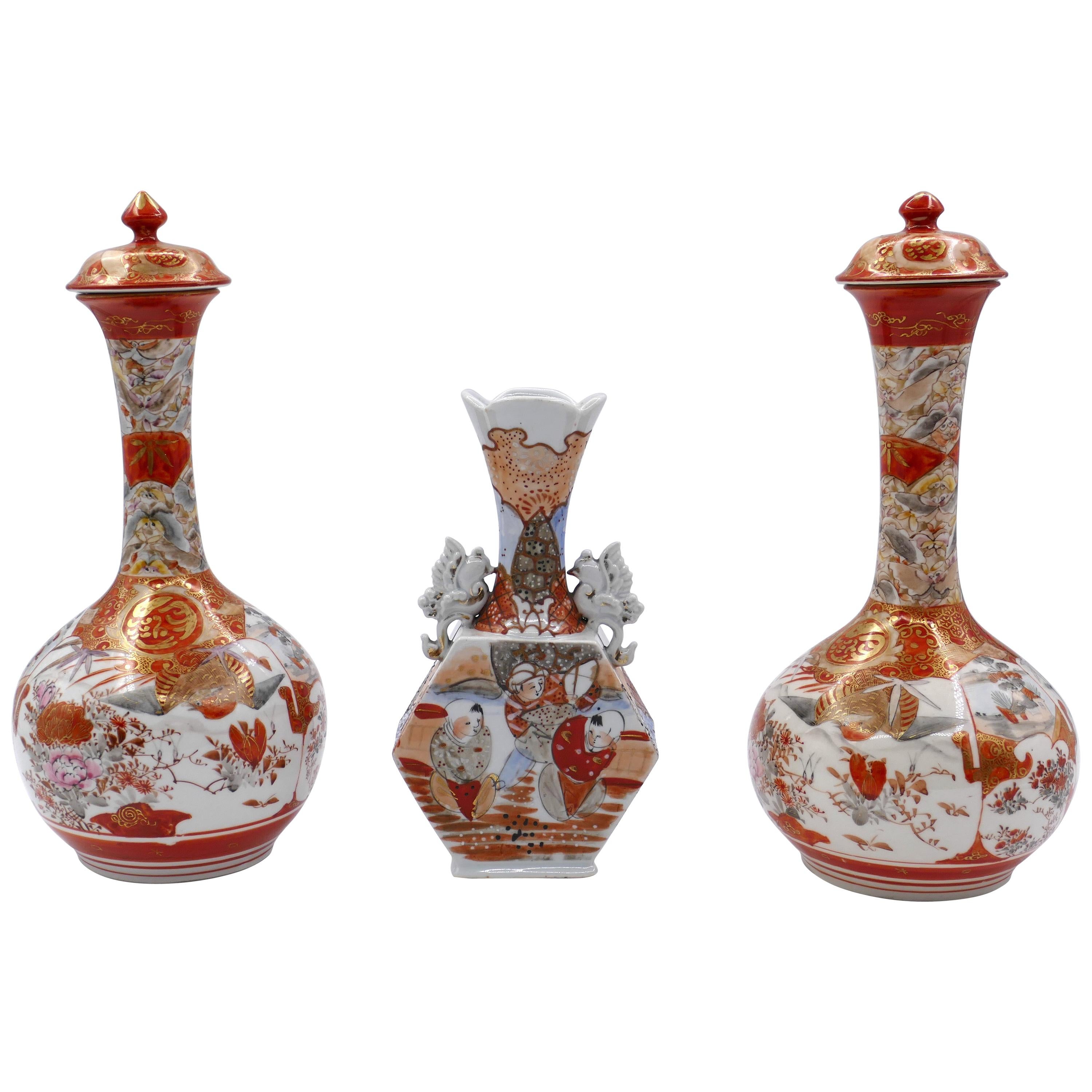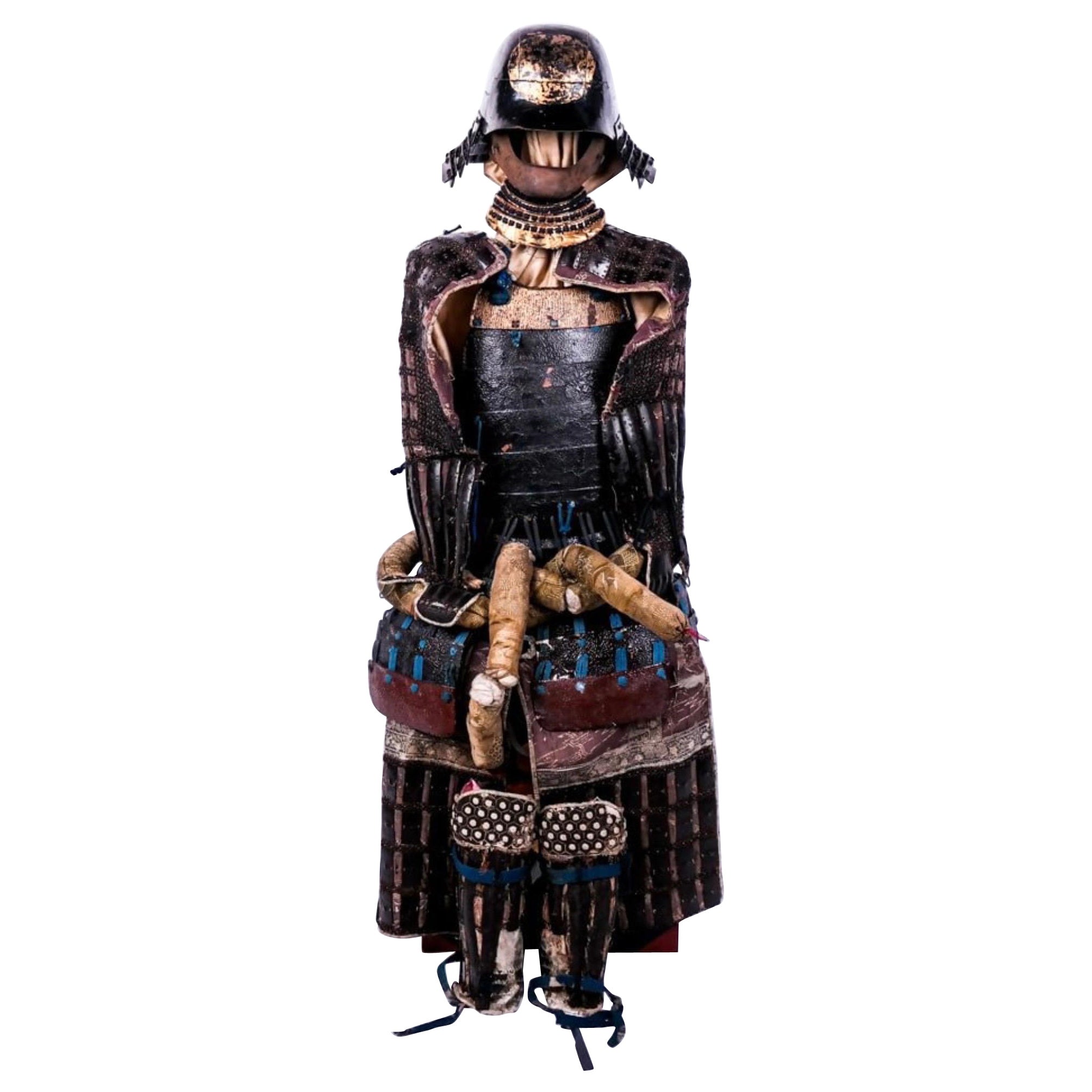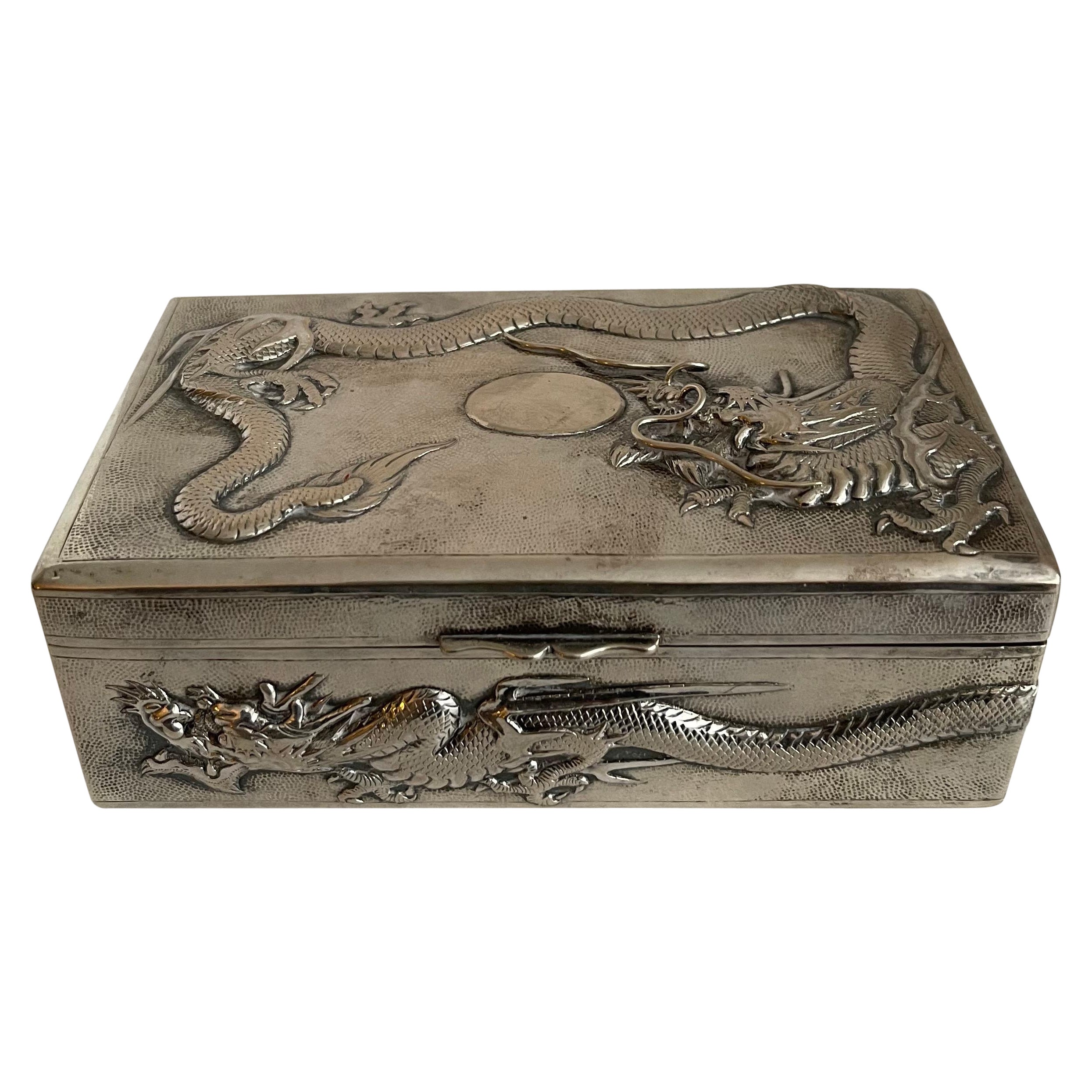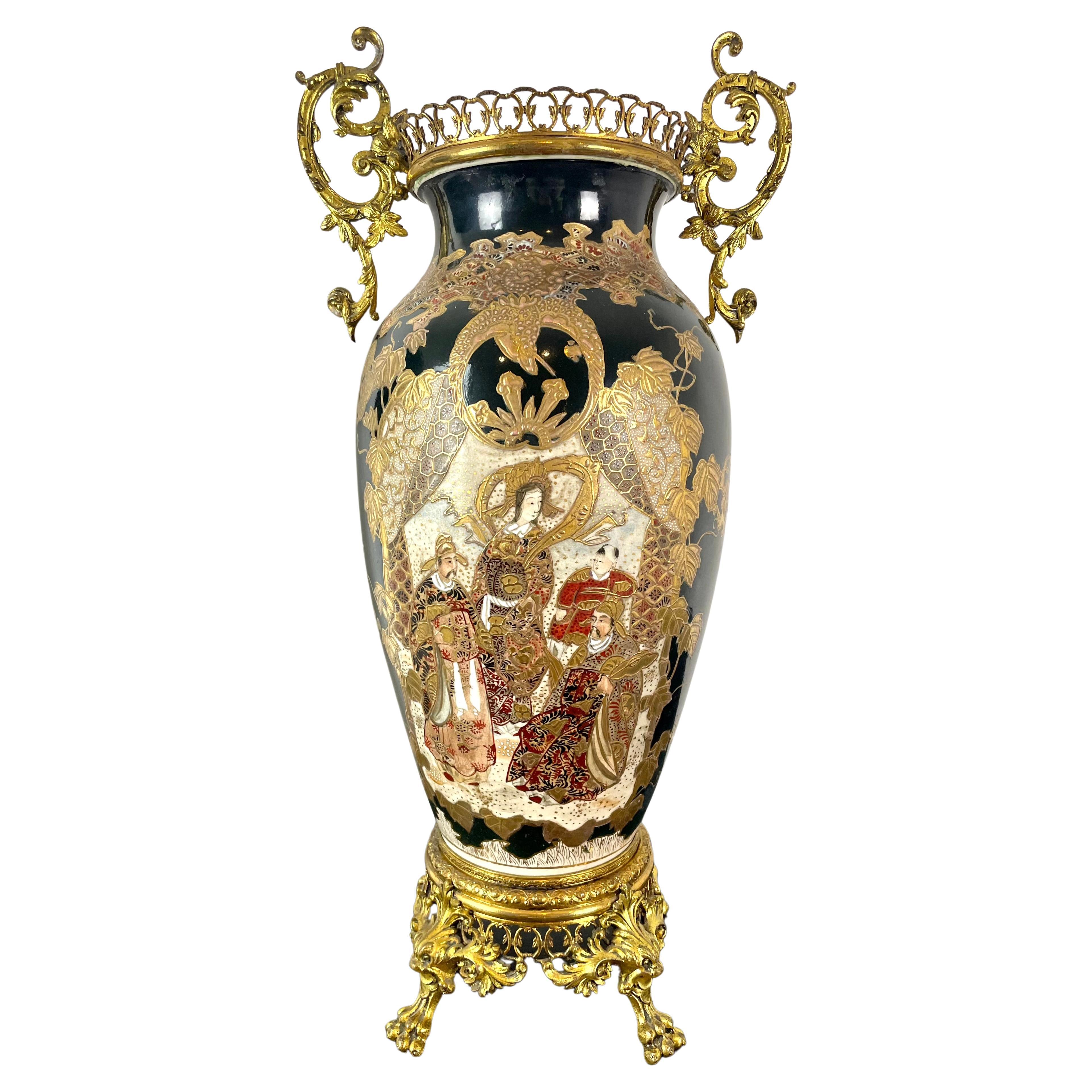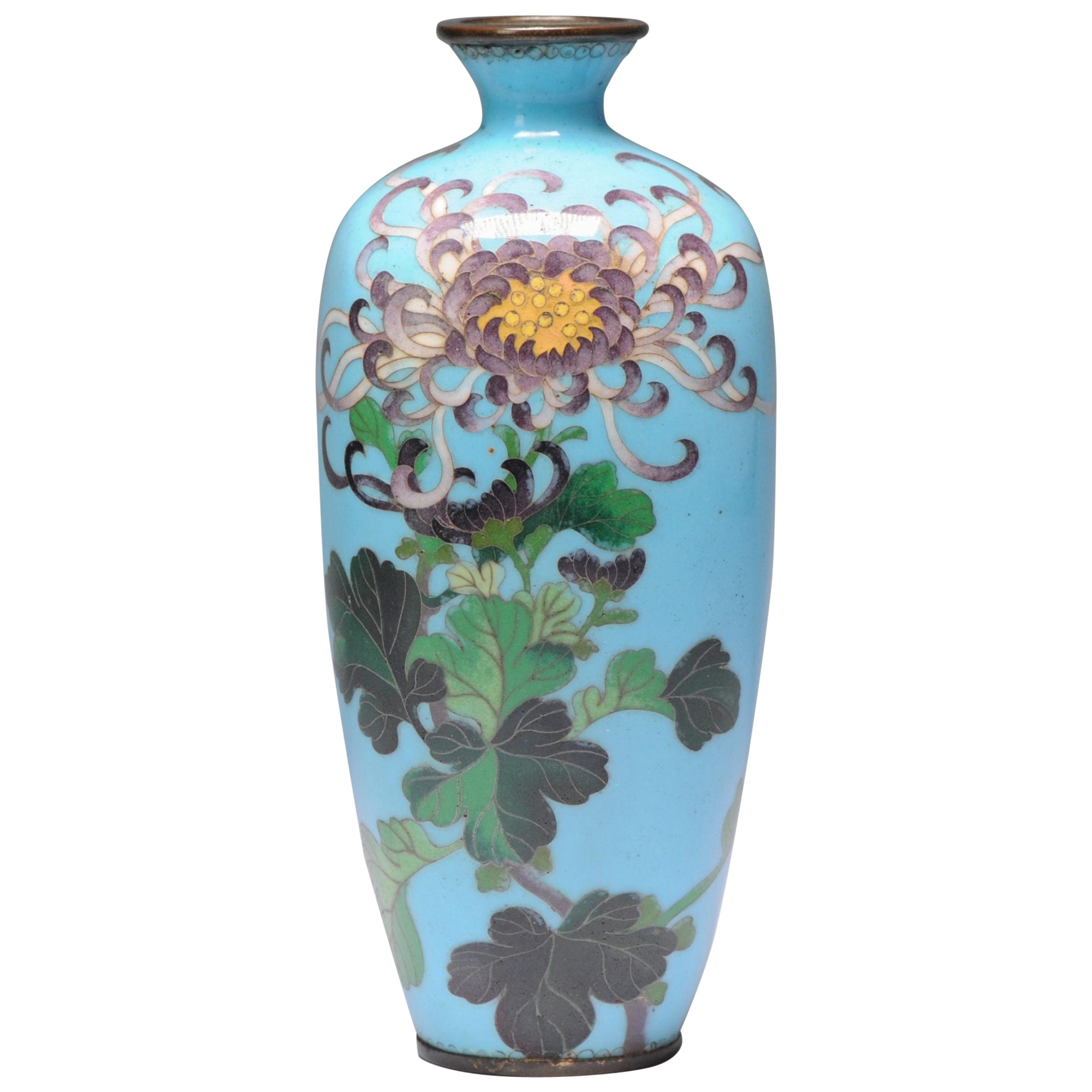Items Similar to Japanese Silver Inlay Samuraï and Dragon Vase, Japan, 18th-19th Century
Want more images or videos?
Request additional images or videos from the seller
1 of 16
Japanese Silver Inlay Samuraï and Dragon Vase, Japan, 18th-19th Century
About the Item
Beautiful and rare Japanese vase from the 18th/19th century. Superb silver inlay work showcasing a Samuraï fighting off a dragon snake with an additional dragon on top of the lid. Additional detailed decorations of chrysanthemums and lily motifs.
This vase was part of the collection of Marechal Niel, close confident of Napoleon the 3rd.
Some signs of use on the surface. Lid and handles are removable. Possible ancient alterations have been made in the 19th/early 20th century.
Dimensions in cm ( H x D ) : 42 x 32.5
Adolphe Niel (4 October 1802 – 13 August 1869) was a French Army general and statesman.
He was born at Muret, Haute-Garonne and entered the École Polytechnique in 1821. Niel entered the engineer school at Metz, became lieutenant in the Engineers Corps in 1827, and captain in 1833. He fought in the French conquest of Algeria, participating in the storming of Constantine. There Niel led the engineer detachment with one of the storming parties, and his conduct gained for him the rank of chef de bataillon in 1837. Niel was promoted to lieutenant colonel in 1840 and to colonel in 1846. His next war service was as chief of staff to General Vaillant during the 1849 siege of Rome, after which he was made general of brigade and director of engineer services at headquarters.
In 1851, Niel became a member of the Committee of Fortifications. He became a member of the council of state in 1852 and in 1853 was promoted to general of division. In the first part of the Crimean War, Niel was employed in the expedition to the Baltic Sea and directed engineering operations against Bomarsund. Early in 1855 Niel was sent to the Crimea, where he succeeded General Michel Bizot as chief of engineers. For some years Niel had been the most trusted military adviser of Napoleon III, and he was now empowered to advise the generals on the spot in accordance with the wishes of the sovereign and the home government.
Niel managed to carry out this delicate and difficult task with as much success as could be expected, and he directed siege operations at the Battle of Malakoff. His reward was the grand cross of the Légion d'honneur. From 1855 to 1859 Niel was employed at headquarters and also served in the French Senate. In the war against the Austrians, Niel commanded the IV Corps and took part in the Battle of Magenta and the Battle of Solferino. Niel was made a marshal of France on the field at Solferino.
After he served for some years in a home command, Niel became minister of war and held the position from 1867 to 1869. In this capacity he drafted and began to carry out a far-reaching scheme of army reform, based on universal service and the automatic creation of large reserves which needed only time to mature. Under his system, those men who had purchased exemption from conscription into the army would nonetheless be called up into a new service, the Garde Mobile. He also was able to rearm the whole of the army with the chassepot rifle, but not the Garde Mobile. He did not live to complete the development of his system.
Niel died in Paris during an operation for a bladder stone, and a year later the Franco-Prussian War destroyed the old imperial army upon which the new formations were to have been grafted.
(Wikipedia)
- Dimensions:Height: 16.54 in (42 cm)Diameter: 12.8 in (32.5 cm)
- Materials and Techniques:
- Place of Origin:
- Period:
- Date of Manufacture:18th-19th Century
- Condition:Additions or alterations made to the original: While two experts have seen this vase and have not mentioned any alterations, in my opinion, it seems like the handles were added in the 19th century and some modifications may have occurred though they are definitely ancient. Wear consistent with age and use. Minor fading.
- Seller Location:PARIS, FR
- Reference Number:1stDibs: LU8131233073972
About the Seller
5.0
Vetted Seller
These experienced sellers undergo a comprehensive evaluation by our team of in-house experts.
Established in 2020
1stDibs seller since 2023
9 sales on 1stDibs
Typical response time: <1 hour
- ShippingRetrieving quote...Ships From: PARIS, France
- Return PolicyThis item cannot be returned.
More From This SellerView All
- Incense Burner, Japan, 19th CenturyLocated in PARIS, FRBeautiful incense burner in the shape of a straw basket with a praying mantis sitting on top. Bronze, Japan 19th century. Good condition, oxidation, one leg missing from the prayi...Category
Antique Mid-19th Century Japanese Meiji Urns
MaterialsBronze
- Monk Head Bamboo and Glass Sculpture, Japan 19th Century, Edo PeriodLocated in PARIS, FRSuperb bamboo sculpture with glass eyes of a Japanese monk. Japan, 19th century, Edo period. In good condition. Slight wear and small dent seen in photos. Dimensions in cm (H x L x...Category
Antique Early 19th Century Edo Busts
MaterialsBamboo, Glass
- Nô Theatre Dancers, 19th Century Meiji Period Japanese Okimono SculptureBy HozanLocated in PARIS, FRTwo superb Nô theatre dancers in carved wood and bone by the artist Hōzan 芳山, Japan late 19th century. Decorations of a fox on the head of one dancer and carved dragons, chrysanthe...Category
Antique 19th Century Japanese Meiji Figurative Sculptures
MaterialsBone, Wood
- Attributed, Val St-Lambert, Empire Style Vase, 19th CenturyBy Val Saint LambertLocated in PARIS, FRSuperb and large empire style vase attributed to the Val Saint Lambert manufacture, 19th century Belgium. Openwork of gilt bronze in arches and wreat...Category
Antique Mid-19th Century Belgian Empire Vases
MaterialsCrystal, Bronze
- Oman, Necklace, 19th CenturyLocated in PARIS, FRStunning and rare Omani tribal necklace in gold and silver featuring eight Burgau thalers dated 1780. 19th century. Very good condition. Preserved and professionally framed. Dimensions of the necklace: 52 x 30 x 3 Dimensions of the frame: 70 x 47 x 5 Secure shipping. This fine Omani necklace of silver and gold comprises two strands of spiky, seed pod-like silver beads; gold-wrapped beads; eight silver Maria Theresa thaler coins; and a large silver and gold amulet box, with multiple chain tassels each of which finishes with a square-shaped pendant cut from sheet silver. The cigar-shaped amulet box called hirz would have contained some Koranic verse or religious text. Such a spectacular display of wealth would only have been worn at times of important festivities such as marriage celebrations. Maria Theresa thalers were made in Austria since the reign of Empress Maria Theresa of the Austro-Hungarian Empire. The Empress died in 1780 and since that time, all thalers that were subsequently struck were minted with that date regardless of the actual year that they were produced. The coins achieved such a level of trust for their silver content (which is 83.3% silver) in the Middle East that neither the design not the date was varied, and so for more than 200 years the coins were used as an international currency among the tribes and the states of the Middle East, in much the same way as the Spanish dollar was used as an international currency at the time elsewhere. The thalers were used to complete most important transactions locally and were also given as dowries. They were also an important source of silver and were melted locally for jewellery. The coins made their way to the ports of the Red Sea, Egypt and northern Africa from the ports of Genoa, Trieste, Livorno and Marseille. European traders used the coins to buy precious materials from the Gulf and northern Africa which it desired – commodities such as spices, coffee, gum Arabic, indigo, pearls, and tortoise shell. The importance and the beauty of the coins saw them incorporated into local jewellery most particularly in Oman and Yemen. References Al-Jadir, S., Arab & Islamic Silver, Stacey International, 1981. Harrigan, P., ‘Tales of a Thaler’, Saudi Aramco World, January/February 2003. Hawley, R., Omani Silver, Longman, 1978. Hawley, R., Silver: The Traditional Art of Oman, Stacey International, 2000. Rajab, J.S., Silver Jewellery of Oman, Tareq Rajab Museum, 1998. Ransom, M., Silver Treasures from the Land of Sheba: Regional Yemeni Jewelry...Category
Antique 19th Century Omani Tribal Art
MaterialsGold, Silver
- Vienna Bronzes, Deer and Doe Sculptures, 19th CenturyBy GeschutztLocated in PARIS, FRSuperb 19th century Vienna bronze sculptures of a stag, the doe is a late 20th century/early 21st production of Vienna bronzes. The deer sculpture is attributed to the Geschütz manuf...Category
Antique Late 19th Century French Romantic Animal Sculptures
MaterialsBronze
You May Also Like
- 17th-18th Century, Edo, A Set of Japanese Samurai ArmorLocated in Sampantawong, THA set of Japanese Samurai armor. Age: Japan, Edo Period, 17th - 18th Century Size: Height 190.5 C.M. / Width 60 C.M. Condition: Nice condition...Category
Antique 17th Century Japanese Antiquities
MaterialsMetal
- Ancient Japanese Kutani Vases, 19th CenturyLocated in Roma, ITThese Japanese Kutani Vases are refined decorative objects realized by a Japanese artist in the 19th century. This beautiful set includes two ...Category
Antique 19th Century Japanese Vases
MaterialsCeramic
- 18th Century, Japanese Edo Period Lacquer & Chain Mail Suit of Samurai ArmorLocated in Atlanta, GAJapanese, Edo Period (1603-1868), likely late 18th century. Step into the rich tapestry of Japanese history with this exquisite 18th-century Edo Period Lacquer & Chain Mail Suit of Armor, a masterpiece that seamlessly blends martial craftsmanship with artistic elegance. Crafted during a period of unparalleled cultural refinement, this armor is a testament to the meticulous skill and dedication of Japanese artisans. The Gosuko armor, at the heart of this ensemble, embodies the traditional armor design of the Edo Period. Each meticulously lacquered plate, carefully adorned with ornate motifs, reflects not only the functional sophistication required for battle but also the aesthetic sensibilities intrinsic to Japanese art. The incorporation of chain mail adds a layer of flexibility and mobility, harmonizing the demands of protection with the fluidity required in combat. A crowning glory to this armor is the Kabuto Helmet, an iconic symbol of samurai identity and resilience. Its design not only provides formidable protection but also serves as a canvas for artistic expression. The helmet's form, combined with lacquer embellishments and a crest, creates a striking visual statement, a representation of the wearer's identity and lineage. To complete the ensemble, the armor comes with a brocade fabric, adding a touch of regality to this already magnificent piece. The interplay of textures and colors in the brocade further elevates the visual impact, turning the act of donning this armor into a ceremonial experience. For the discerning collector, this piece is presented in a lacquer armor box, meticulously crafted to safeguard and showcase the historical significance of the armor. The accompanying wood armor display stand serves as a stage, allowing this masterpiece to command attention in any setting, whether it be a private collection, museum exhibit, or a distinguished living space. Owning this 18th-century Japanese Edo Period Lacquer...Category
Antique 18th Century Japanese Japonisme Antiquities
MaterialsIron, Gold Leaf
- 19th Century Chinese Export Silver Dragon Cigar BoxLocated in Stamford, CTLate 19th century, circa 1890 Chinese export silver rectangular box. Hand engraved repoussè dragons. Wood lined. Makers mark on the underside.Category
Antique 1890s Chinese Chinese Export Antiquities
MaterialsSilver
- Japan Satsuma Porcelain Vase and Golden Metal 19th CenturyLocated in Beuzevillette, FRLarge Satsuma porcelain vase from the Meiji on a gilt metal frame from the Napoleon III period. On one side of the vase is represented a deity, probably ...Category
Antique 19th Century Meiji Antiquities
MaterialsMetal
- Antique Bronze Vase Cloisonné Japan Meiji 19th Century JapaneseLocated in Amsterdam, Noord HollandAbsolute top Quality vase with superb decoration of flowers Cloisonné is a way of enamelling an object, (typically made of copper) whereby fine wires are used to delineate the dec...Category
Antique 19th Century Japanese Meiji Antiquities
MaterialsPorcelain
Recently Viewed
View AllMore Ways To Browse
18th Century And 19th Century
18th 19th Century Furniture
18th And 19th Century Furniture
X Inlays
Stone Japan
Japanese Stone
Bronze Inlay
18th Century Paris
Japanese Motif
Antique Vases Japanese
Japanese Stone Art
Dragon And Asian
18th Century Cross
Antique Japanese Silver
Japanese Antique Silver
Japanese Motif Furniture
Ancient Antiquities
18th Century Japan
